BREAKING NEWS
Eco-Alianza Signs Sister Reserve Agreement
with the University of California Natural Reserve System
[/title]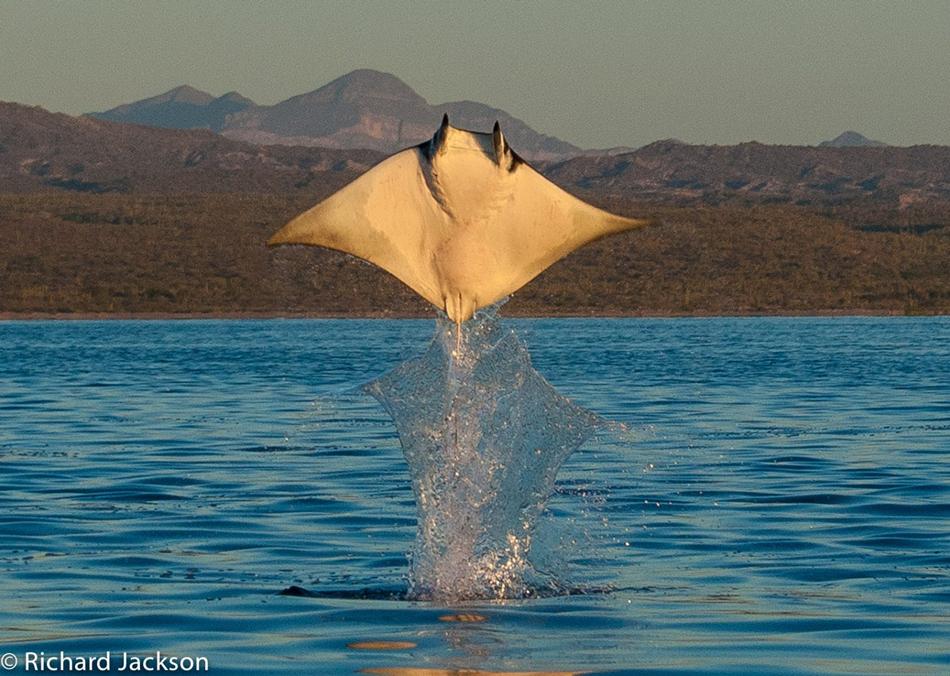
Photo courtesy of Richard Jackson
As this issue of Soundings goes to “press” we have received exciting news from California, detailed in an introductory announcement from the University of California Natural Reserve System (view the announcement by clicking HERE).
This initiative is an important project Eco-Alianza has been working to develop for five years and will benefit Loreto in countless ways. Our July Soundings newsletter will be a SPECIAL EDITION focused entirely on the new Sister Reserve agreement with UCNRS.

“A Clean Loreto is an Ideal Loreto” Forum June 19
#LoretoIdeal Forums to Begin Exploring Priority Issues for Loreto
[/title]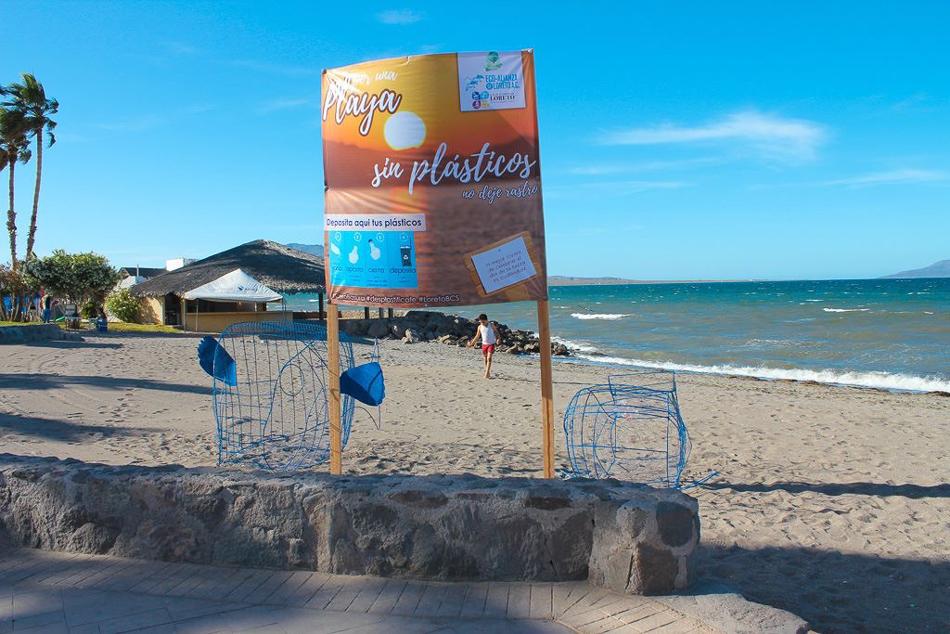
Eco-Alianza staff photo
The #LoretoIdeal initiative began last year, linking 15 participating community groups and associations in an effort to define and address Loreto’s most significant problems, in cooperation with local government and the citizenry of Loreto. Soundings has several times reported on the formation and development of this participative group, which was initiated by Eco-Alianza and then transitioned to an equal leadership by participating organizations. For more information and background, visit http://loretoideal-eng.strikingly.com/ .
After many monthly meetings, representatives of the participating groups now have established the #LoretoIdeal consensual agenda for positive change and have set priority action areas. The next step is to hold public forums to explore each of the priority focus areas, beginning on June 19 with a forum on #LoretoLimpio, or “A Clean Loreto”. Other priority themes will be explored in additional forums, to be announced.
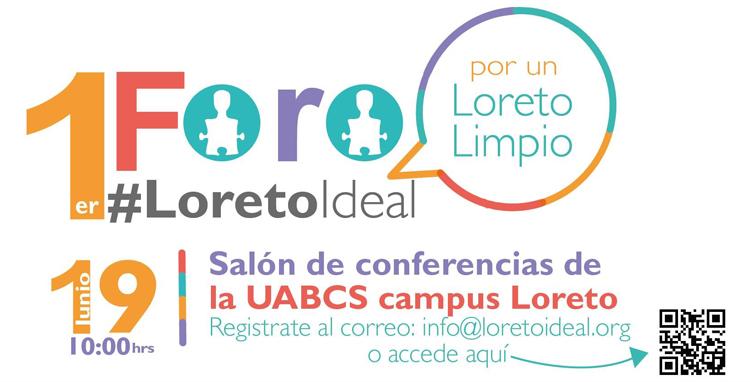
The format for the three-hour event, to be held at the Loreto campus of the state university (UABCS), is a “participative space,” where a panel of invited guests will expose and discuss their background on the topic. Representatives of each of the three levels of government will be invited to attend. The forum will be held on June 19, from 10:00 a.m. to 1:00 p.m.
The multidisciplinary panel for this first forum on the topic of a “Loreto Limpio”, will include representatives from the #Desplastificate group (which was instrumental in passing the state ban on single-use plastic bags), from the state university, from the municipal government’s department of ecology, and from the state government.
Limited space will be available for public attendance and participation, as well. Students, representatives of civil associations, service providers, and those interested in solid waste management issues are invited to register to observe and will be allowed to submit written questions for the panelists. To register: info@loretoideal.org
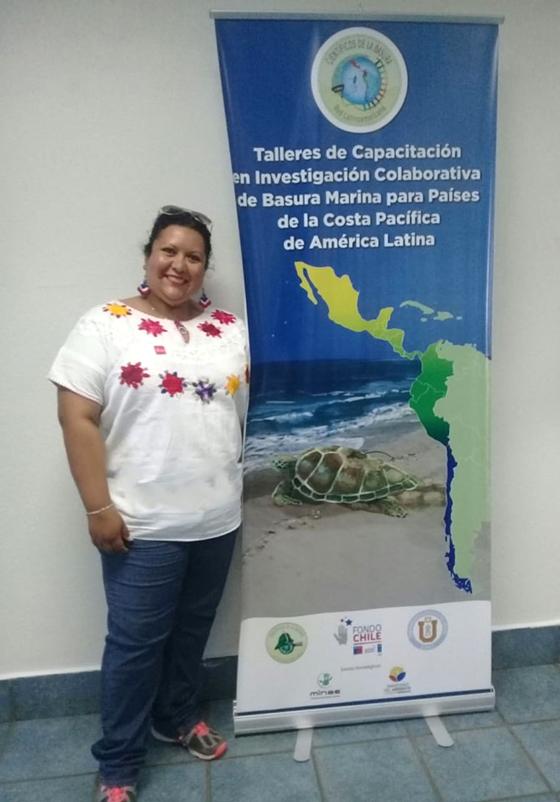
Workshop Photo
Environmental Education Program Coordinator Alma Rico recently returned from a trip to Puntarenas, Costa Rica, funded by a scholarship she earned to participate. Alma successfully completed training workshops dealing with marine litter research and citizen science. She joined teachers from Guatemala, Nicaragua, Mexico, El Salvador, Honduras, and Costa Rica. Over the next year she will engage Loreto students in the project, and will report results in 2020 at a gathering in Coquimbo, Chile. The Network of Litter Scientists of Latin America is supported by the Pew Charitable Trusts.
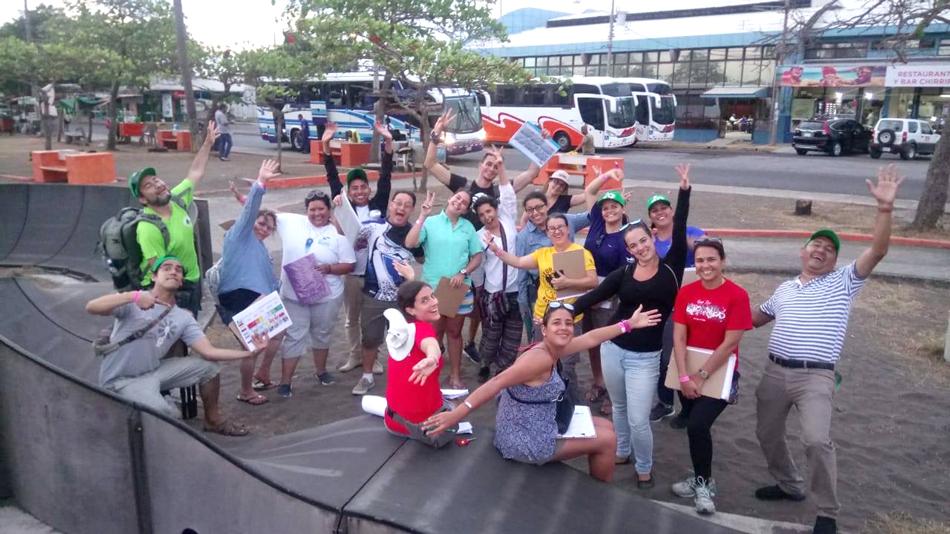
Workshop Photo
Alma and group activities in Costa Rica
By Alma Rico
In late April, I was fortunate to participate in the Training Workshop on Collaborative Marine Litter Research for Pacific Coast Countries of Latin America, learning a lot about sampling and applying the scientific method within schools.
With the training from the workshop, our environmental education program makes an important evolution, becoming an eco-scientific education program. We started to implement the project at the end of May, with a group of teenage students belonging to the Huella Verde (green footprint) Club of the Modesto Sánchez Mayón High School, with the help of the teacher Karina Isabel Ramírez Trevizo who belongs to the REAL (environmental educators network of Loreto).
The students are collaborators of the “Network of Waste Scientists” in the project “LEAP the GAP: Schoolchildren using citizen science to deal with marine litter along the Pacific coast of Latin America.” This project has as a general objective that students from different countries scientifically study marine litter to identify their sources, characteristics and impacts, and from the knowledge generated by them, disseminate results and reduce marine debris in said countries. Within the network, students will be able to interact and share experiences, results and proposals, as well as co-design local action plans. By participating in this project they will develop scientific research skills that allow them to know and understand environmental problems, as well as to learn about ocean ecosystems and marine litter.

In this way, Eco-Alianza’s Environmental Education program fulfills its main objectives in several of its projects at the same time. Students know and interpret their treasures and natural resources, strengthen their skills and knowledge, as well as help implement waste reduction projects, based on their own research.
Currently, we are working with the survey phase that aims to know the appreciation of our community about the problem of marine debris. After this phase, through summer vacations we will continue visiting beaches to collect samples of garbage contain biotic interactions (e.g., litter with marine life in it or around it, or samples of trash that show signs of having been bitten). The objective of this next phase is for students to learn about the main sources of marine debris that contaminate our ecosystems and the approximate time the debris has spent at sea or on the beach.
Later we will work with sampling of macro and meso garbage, to conclude with a presentation of results at an International Congress in Chile at the end of the year 2020, where the collaborating teacher of the school will be able to attend, as well as two students. It is worth mentioning that in January of 2020, I as a participant and direct collaborator of the network will also travel to Chile, for a first presentation of results on the research carried out until that time.
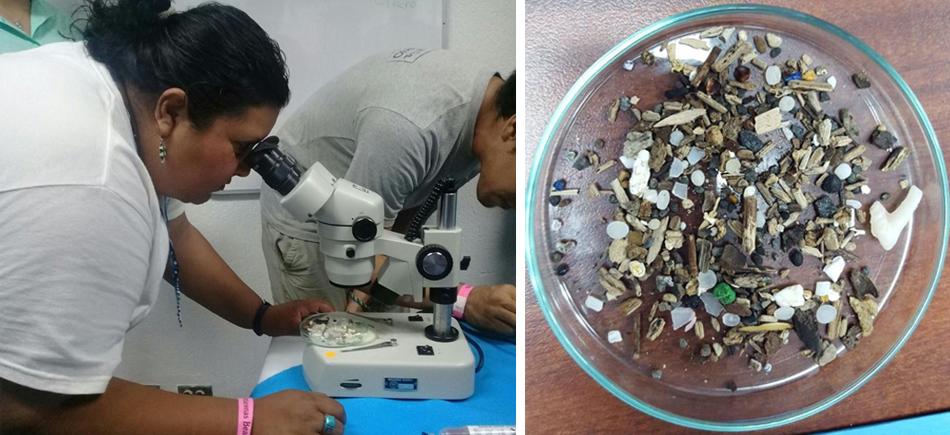
Workshop Photos
As coordinator of the projects of this program, it fills me with joy, to be able to carry out these activities that enhance our organization, so we can show the participating countries and the world that we are becoming more aware, and that every time we are more active, we can be part of those who help to change important decisions in the world.
In the following link I was pleased to see the main slide show photo of the first article where I appear with my uniform, proudly representing Eco-Alianza and my team. Because without them, we would not advance the same, emphasizing that our conservation projects seek sustainability, in which conservation becomes the axis of social and economic development — so that social awareness becomes transformed in the local community into concrete actions that care for natural resources and promote human development.
of Latin American Waterkeepers[/title]
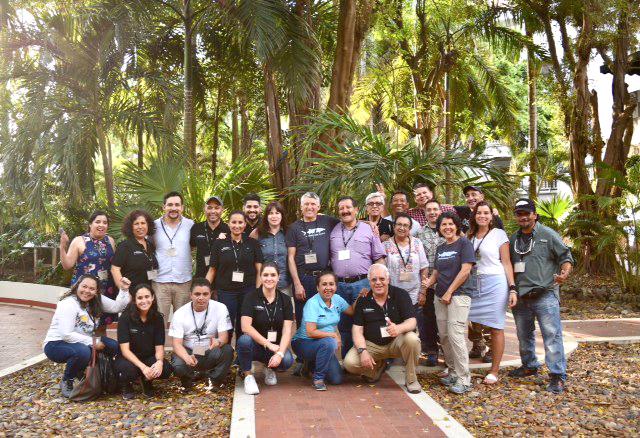
Workshop Photo
As we mentioned last month, Eco-Alianza’s Executive President and Loreto Coastkeeper, Hugo Quintero ventured in late April to Cartagena de Indias, Colombia, where he participated in the first-ever gathering of Waterkeepers from throughout Latin America. The significant conference gave participants a chance to share notes with colleagues of 26 organizations from 9 different countries, and to make plans for some amazing collaborations.
About 25 participants shared best practices and stories of conservation and protection of water sources throughout Latin America. What they came to realize, Hugo says, is that working together we will be able to dramatically help each other in our capacities to afront the great challenges of the Latin-American Region.
This regional Waterkeeper Alliance conference renewed the sense of purpose and shared commitment on a regional level, Hugo says. One of the main outcomes was to affirm our shared mission to keep drinkable, fishable and swimmable water everywhere, with a signed commitment of each of the 26 participants: to promote the protection of all Latin-American watersheds with an emphasis on the Amazonian region; to establish joint legal strategies for the efficient defense of water bodies; to promote the use of new technologies monitoring water quality; to implement sharable open data with the use of geographical information systems within each one region; and to design and implement a strategic plan that orients a joint and effective work for the achievement of these ends.
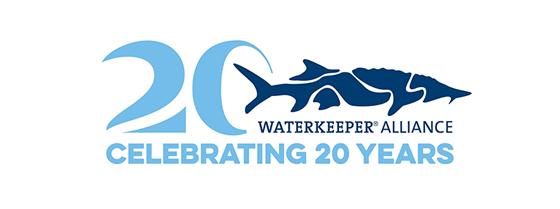
The Waterkeeper movement was started by blue-collar fishermen on New York’s Hudson River in 1966 because industrial water pollution was destroying their way of life. Their environmental activism sparked the Hudson’s recovery and inspired others to launch Waterkeeper groups around the world.
Waterkeepers, Baykeepers, Coastkeepers, Riverkeepers and other grassroots water protectors in 1999 united as one powerful force, fighting for every community’s right to drinkable, fishable, swimmable water. “Today, Waterkeeper Alliance unites more than 300 Waterkeeper Organizations and Affiliates that are on the frontlines of the global water crisis, patrolling and protecting more than 2.5 million square miles of rivers, lakes and coastal waterways on six continents.”
Eco-Alianza’s weekly and bi-weekly seawater quality monitoring of 12 local beaches, and development of a professional-level water testing laboratory has for five years now compiled a critical database tracking biological threats to Loreto’s water resources. As Loreto’s Coastkeeper, and a member of the international Waterkeeper Alliance, Eco-Alianza regularly posts results to the SwimGuide App for smartphones, providing up-to-date information on local beaches at which the water is safe from biological contaminants.
Javier Mercado Scholarship Awarded May 20
[/title]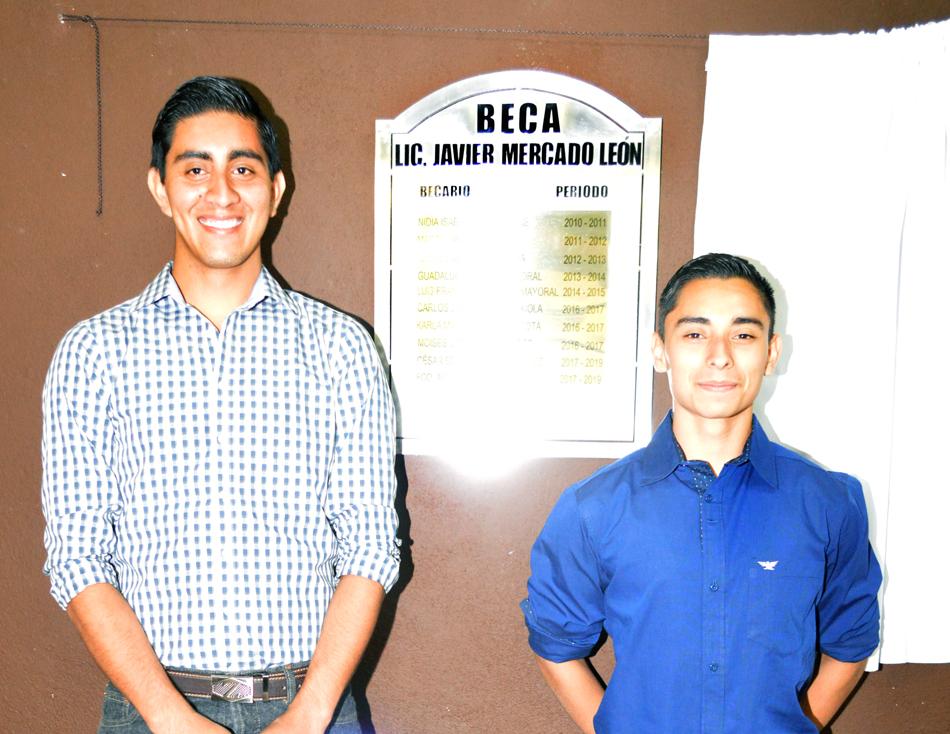
Eco-Alianza staff photos
On Monday, May 20, the Javier Mercado scholarship ceremony was held at the Autonomous University of Baja California Sur, Loreto Campus. For the second consecutive year the scholarship was awarded to students Francisco Alberto Martínez Aguiar and César Eduardo Yañez Valdez, who will continue to support environmental conservation projects in the municipality of Loreto.
Our congratulations go out to these fine students and community members.

![]()
“Nature Notes” is a monthly short feature detailing some of the wondrous, seasonal activities taking place around us.
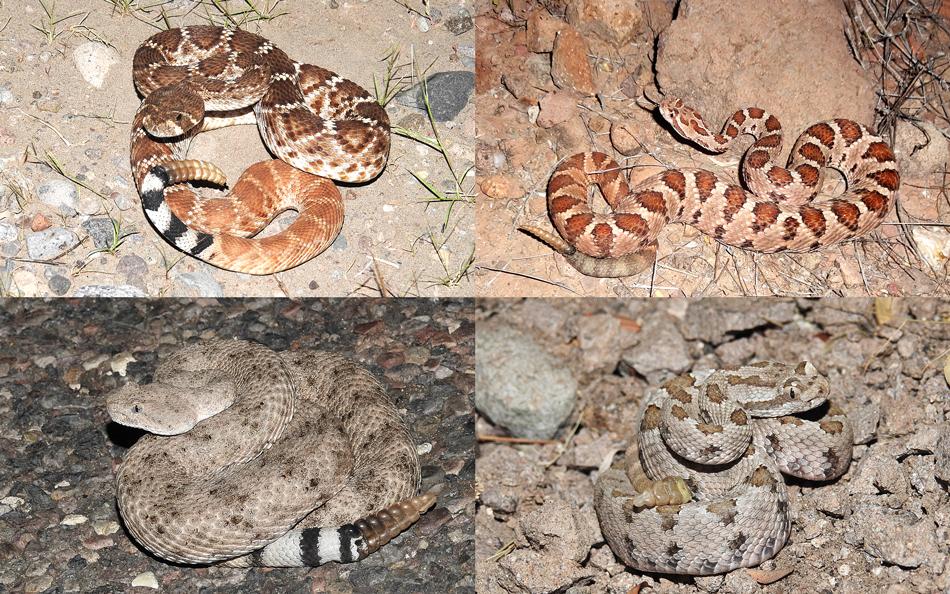
Photos courtesy of Tom Haglund/BCS Birds
Photos from top left, clockwise:
Red Diamond Rattlesnake (Crotalus ruber) is a lovely display of pattern and color. Baja California Rattlesnake (Crotalus enyo) is another handsomely marked example. Baja California Rattlesnake (Crotalus enyo) is kinda cute, really. Speckled Rattlesnake (Crotalus mitchellii) looks a lot fiercer than it typically is.
By Tom Haglund
Ever wonder if there are dangerous snakes in Baja Sur? Well, yes, there can be snake/human encounters that result in serious problems for either or both individuals. Occurring regularly here are three species of rattlesnake. They have been evolving in close proximity to humans for thousands of years and want nothing to do with us. Those who do accidentally interact with humans are far less likely to pass their genes along to future snakes than those who don’t. Thus there is great evolutionary pressure on all types of snakes to avoid snake/human interactions.
On the human side of the relationship there is likewise a negative Darwinian bias to envenomation by a rattlesnake. We say envenomation because most rattlesnake bites don’t include much venom. Rattlesnakes try hard to warn away creatures who come uncomfortably close to them by rattling their keratinous tails. The typical “dry” rattlesnake bite is a further attempted warning and contains little or no venom. Their venom is what they use to obtain food, and wasting it on something too large to swallow would be another strike against them as a species. If you should happen to be bitten, as some 7,000 people are annually in the U.S. (far larger population samples of both rattlesnakes and humans than here), your likelihood of actually dying is well under a half percent.
All of that said, there is still good reason to minimize your risk of being bitten. The most important precaution is to avoid situations where you cannot clearly see where you are about to step, sit, reach a hand, etc. Wading through knee-deep grass is an excellent way to test your luck, as would be any other reckless movement through heavy cover. Trash, brush, wood, or rock piles are full of dark crannies that could hide a snake. Take your time, look around, under, between.
The most obvious precaution is, if you see a snake leave it alone, let it fulfill its strong natural desire to get away from you. Don’t pick one up, or try to pin it down; they are generally a lot faster and stronger than they appear. Among naturalists’ lore is reference to a snakebite victim profile: “Male between 15 and 25 years of age who has been drinking.” To think that snakebites are very frequently, “Here, hold my beer!” moments is not outlandish.
Snakes are among our best friends in nature, and if you should happen to encounter one of these pinnacles of rodent control, please, hold your own beer and leave it alone.
Spanish names of snakes mentioned:
Red Diamond Rattlesnake — Cascabell de Diamantes Rojos
Baja California Rattlesnake — Cascabel de Baja California
Speckled Rattlesnake — Cascabel de Lentes o Cascabel Manchada
MEET THE STAFF
Francisco Talamantes Added as Projects Technician
[/title]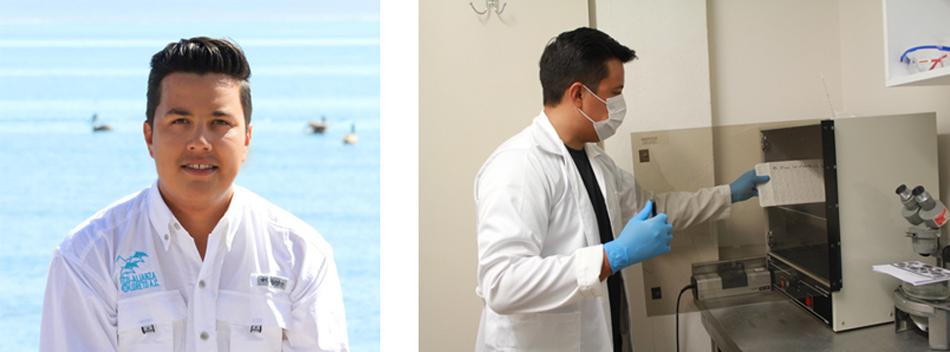
Eco-Alianza staff photo
Eco-Alianza’s newest employee is as comfortable on the water as he is on land, which is a good thing considering his new duties. Francisco Talamantes has passed the tests and completed training to professionally help us sample and analyze sea water quality, along with his skills to manage and maintain our vessel and equipment. As projects technician, he will share responsibility in following our strict protocols to ensure accurate data is produced for Eco-Alianza’s Loreto Coastkeeper initiative. He will also assist other projects of our Marine and Coastal Conservation Program.
Prior to joining Eco-Alianza, Francisco worked for close to a year as a Park Ranger for the Bay of Loreto National Park, working primarily in surveillance and inspection of the park as part of a joint effort of Eco-Alianza, PNBL, CONANP, USFWS and five other Mexican federal agencies. He is a Loreto native whose family owns a small restaurant, as well as a tourism service provider operation.
Welcome aboard!
Save the Date – 12th Anniversary Gala – November 16
[/title]
Eco-Alianza staff photo
As announced last month, our 2019 gala will come complete with a beautiful new venue, the spectacular 5th Floor of Hotel La Mision. Panoramic views of the mountains on one side and the sea on the other will remind all of us exactly what we’re working to protect. Tickets will be available in the Fall, but for information on sponsorships or to discuss donating an item or experience for the benefit auction, please contact Mark_Hufford@yahoo.com .





